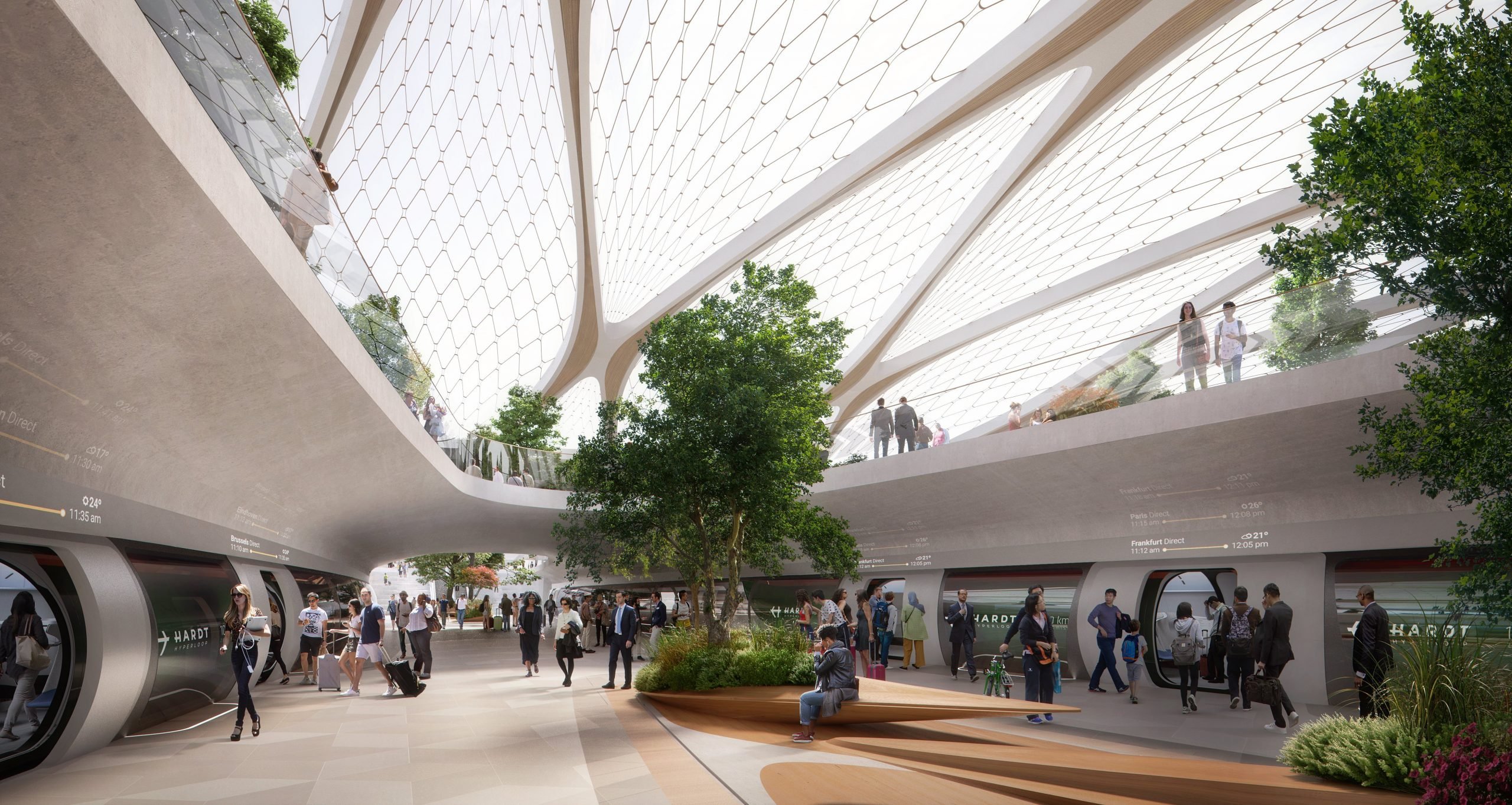
New mobility solutions are being invented every day these days. Some are useful in this new world of demand-driven multimodal mobility. But the majority of these inventions are no more than interesting gadgets. For instance, I’m not expecting to see people hop en masse onto a flyboard anytime soon. The much-discussed Hyperloop, on the other hand, is the next big thing that you cannot really afford to miss out on as a city.
After all, it is common knowledge that this global eco-friendly mobility alternative to aviation can drop you off in the heart of a city. This will be possible because a Hyperloop station uses much less space than an airport. Nor does it cause any noise problems.
This is one of the aspects that make a Hyperloop system so attractive. No hub on the outskirts of a city but smack in the middle of the city center. This makes the hub seem like a natural part of a city. You will hardly even notice that it is a major travel hub, it will just be an attractive, spacious, clean place with plenty of amenities.
The hub as a ‘destination’ in itself, for the surrounding neighborhoods as well as passengers. Yet the affordability of the Hyperloop is often singled out as its Achilles’ heel. When it actually offers the unique opportunity to build a public transport system without the need for public investment.
Densification and mobility are key mechanisms by which cities are created. People are only prepared to travel a certain distance to reach a special service or product as long as they can do so in comfort. This is why cities exist in centrally located, easily accessible places. Densification and mobility are still a two-way street; one cannot exist without the other.
Gigantic increase in land value
It is therefore not difficult to predict that land values in cities that are connected to the global Hyperloop Network are bound to rise dramatically. Just think about it. All of Western Europe will then be within commuting distance of a Dutch city like Eindhoven. A short trip to Frankfurt is possible in 20 minutes. A wide-ranging and substantial supply of high-quality goods such as extremely freshly-picked, caught, or locally-sourced food from an enormous supply zone will come directly to the local market for urban consumption. An attractive prospect also for all regions, which are connected directly to the 21st century this way.
Once you know that, how do you deal with development rights around the stations? Should you take into account the enormous long-term potential of this new technology that is still in its infancy?
Developers with a subway company
They have been doing that in Hong Kong for 40 years already. There, the government offers development rights on land holdings not directly to developers but instead, for example, to the Hong Kong Metro Company. The Metro Company subsequently builds a subway in exchange for these land rights. So that subway line will not cost the government a cent. The subway company finds a developer and they develop the plots together. Part of the profits goes to the subway company so they can build the line. There is also a portion of the ground lease that the developer pays directly to the government. This is how Hong Kong generated revenue of 1.8 billion euros with Transit-Oriented Development in 2018. A free Hyperloop is thereby on the horizon.
About this column
In a weekly column, written alternately by Wendy van Ierschot, Bert Overlack, Eveline van Zeeland, Eugene Franken, Jan Wouters, Helen Kardan, Katleen Gabriels, Mary Fiers and Hans Helsloot, Innovation Origins tries to figure out what the future will look like. These columnists, occasionally joined by guest bloggers, are all working in their own way on solutions to the problems of our time. So that tomorrow is good. Here are all the previous articles.

